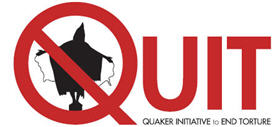New boss for
new captives? Admiral takes charge of Trump’s Guantánamo prison.
BY CAROL ROSENBERG
april 7 2017
http://www.miamiherald.com/news/nation-world/world/americas/guantanamo/article143422064.html
GUANTANAMO
BAY NAVY BASE, CUBA
The
detention center entered a new era Friday with the installation of the first
prison camp commander of the Trump administration, an admiral charged with
running the wartime prison that could grow for the first time in nearly a
decade.
“The
work you do, the mission you execute is vitally important, incredibly complex
and not well understood by many people,” said Rear Adm. Edward
Cashman as he assumed command of the detention center of 41
captives run by a 1,750-member staff.
A
day earlier, the head of the Southern Command urged Congress to fund a new
prison staff barracks, signaling the unending nature of the detention
center that President George W. Bush opened, President Barack Obama failed to
close and President Donald Trump vowed to “load it up with some bad
dudes.”
Adm.
Kurt Tidd, the Southcom commander, arrived Thursday night to preside at the
brief ceremony in the base chapel — and introduce Cashman to representatives of
the Navy community of about 5,500 residents as “one of our Navy’s rising
stars.” Tidd called Cashman “no stranger to pressure and intense scrutiny” as
he became the 17th commander of detainee operations.
“Make
no mistake about it, detainee operations are an essential tool in our
counterterrorism tool kit. They’re an operational, legal and moral imperative
against an unconventional enemy,” Tidd said.
A
total of 41
captives remain of the 780 or so men and boys who passed through
the prison camps since a Marine general opened Camp X-Ray in January 2002. If
Congress hadn’t blocked it, the Obama administration would have transferred the
last 41 to the United States to close that chapter of history. Instead, 10 of
those who remain have been charged at the war court, called military
commissions, and the rest are considered prisoners in the War on Terror.
The
departing commander, Rear Adm. Peter J. Clarke, was the first submariner to
lead the detention center staff, and left to an uncertain future. He was
temporarily assigned to the Washington, D.C., headquarters of the Chief of
Naval Personnel, pending a future assignment.
He
was also the last so-called closer, a detention center commander who ran the
camps during an aggressive period of downsizing of the detainees, if not the
staff.
When
he took charge, in late 2015, there were 112 captives and a staff of about
2,100 troops and civilians — a ratio of nearly 19 staff for every prisoner. He
was charged with sending away captives as State and Defense Department envoys
arranged for their transfer. And he did so with alacrity, dispatching 71
detainees to such far-flung locations as Mauritania in western Africa, Oman on
the Arabian Sea and Serbia in southeast Europe.
Friday,
Cashman’s staff numbered about 1,550 troops and 200 civilians. That’s nearly 38
troops for each prisoner — from guards to medical staff to personnel and
intelligence specialists. Many were drawn from the National Guard on
assignments of a year or less serving in what Tidd called a force of “ordinary
people performing an extraordinarily important mission.”
Cashman
takes charge as essentially the “re-opener” — poised to accept the first new prisoner
since March 2008, if U.S. forces take a captive suitable for Prisoner-of-War
style detention or war crimes trial by military commissions.
“We
don’t know what the future holds,” Tidd told the assembly. “We know that
detainee operations at Guantánamo will continue unless or until the very last
detainee departs the island. We know that these missions will continue unless
otherwise directed by our Secretary of Defense and our President. We know this
mission might evolve as we continue confronting threats to our nation and to
our way of life.”
“If
operations here expand, if they change, or if they stay the same, you’re
ready.”
Cashman,
a Massachusetts native, got a mechanical engineering degree at the
Massachusetts Institute of Technology. Most of his career has been in the Navy
although prior to this position he
was director of the Pentagon’s Joint Integrated Air and Missile
Defense Organization, which involves all the services.
The
Joint Task Force Commander has oversight of the predominantly Army guard force,
an intelligence unit, logistics and personnel as well as a U.S. Coast Guard
unit that patrols parts of Guantánamo Bay and the waters off the coastal prison
complex.
Cashman
ran a combined Navy-Coast Guard operation of patrol craft in the Persian Gulf,
where U.S. military sometimes engage Iranian vessels. That’s just what happened
in January 2012, when a Coast Guard patrol boat, the Monomoy, saved six Iranian
mariners from an unseaworthy Iranian cargo dhow whose engine room was flooding
in a “nighttime rescue at sea” celebrated by Cashman, then commander of Task
Force 55, overseeing the operation.
In
his farewell remarks, Clarke paid particular homage to the Navy medical staff
of 100 or so members that tends to captors and captives in what he called “the
most scrutinized military medicine mission in the world.”
Southcom
surged medical staff into the prison’s cellblocks at the height of the
sweeping 2013
hunger strike. And, as he left Friday, Clarke called the captives “more
compliant as patients than our own troopers and the American population as a
whole.”

No comments:
Post a Comment
Note: Only a member of this blog may post a comment.